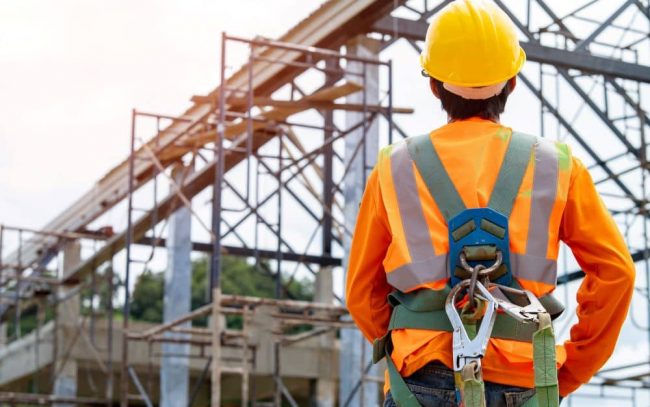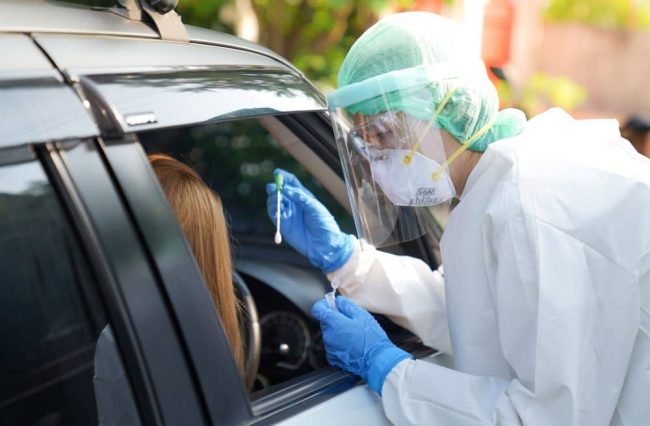PPE Responsibility in 2022
Almost two years have passed since COVID affected millions and millions of lives worldwide. One issue that we still face, aside from the pandemic itself, involves general practices for the people’s safety. According to certain news websites, Australia started the new year with a bang – that is, a record number of COVID cases. Outbreaks, particularly in the eastern states, were a problem and difficult to contain.
The government and health experts recommend ways to slow down the spread and protect the people. One of which is through the use of Personal Protective Equipment or PPE, which include:
- Helmets and other similar items for head and scalp protection
- Surgical masks, particulate filter respirators, and other respiratory equipment
- Goggles, face shields, and other equipment for eye protection
- Gloves and arm protective equipment
- Boots and other hand foot and leg protective equipment
- Gowns, apron, and others for body protection
Strategies differ from one industry to another, including telehealth consultations, which help optimise PPE use. Some workplaces have clinics onsite.
Safe Work Australia emphasizes workers’ safety. Everyone has the right to be in a clean, safe, and healthy work environment, no matter their job or industry.
The Importance of PPE in the Workplace
Wearing PPE in the workplace is a necessity, especially during these crucial times. But even before the pandemic, many workers have been donning PPE for many reasons, including:
- PPEs reduce your injuries for workplace injuries. Suppose you get injured and take your case to a judge. In that case, your lawyer will find it easier to get your compensation than if you did not follow PPE protocols.
- Health conditions can be avoided, especially if exposed to certain chemicals and compounds at work. Cancers like mesothelioma have rapidly increased over the years. In Australia, over 800 cases were estimated to be diagnosed in 2021. Wearing PPE, along with healthy habits, can reduce exposure to dangerous substances.
- You only have one life. Your eyes, limbs, and other body parts will not grow back or go back to their healthy, normal state once they are injured badly. Anything sharp, corrosive, and hot can easily cost you your limbs or even your life. By donning safety garments and equipment, you protect yourself at all times.
- Some people complain about wearing PPE because it can be uncomfortable and heavy. But PPE can help increase the quality of your workday. It acts as a support system so that you can do the tasks you are required to do. For example, weight belts for those who have to do heavy lifting are more confident because their PPE promotes stability.
Everyone has the right to question the efficiency and effectiveness of the PPE they are required to wear. They should feel that they are properly and adequately educated on PPE standards. Organisations like Safe Work Australia and WA Health support Australian workers so that they feel safe due to the reduced hazards on the job.
However, it should be noted that the government does not impose PPE use. It is at the business’ discretion to enforce its workers to wear protective equipment. Should the company require workers to don PPE, the staff and visitors should also be aware of their PPE responsibilities.
If you own a business, you have duties to fulfil to ensure workers are healthy and safe in the workplace. You should:
- Choose suitable protective equipment based on the job that needs to be done, the work environment, and the comfort and health of the workers.
- Provide information and thorough instructions so that workers understand their responsibilities when wearing PPE.
- Assess the effectiveness of PPE periodically
- Place signs on the storefront or within the premises to serve as a reminder for PPE use.
As COVID continues to exist, specific practices and regulations have been enforced to ensure the safety of the workers, guests, and everyone on the worksite. For example, people could freely enter shops and businesses without wearing masks before the pandemic. These days, companies have the right to impose PPE use. Businesses need to remind visitors or guests to wear PPE correctly.
Another change involves recognising certain devices as therapeutic or medical goods, which include gowns, visors, and goggles. Medical devices should be used in the workplace to prevent disease transmission.
PPE standards should be met before purchasing the equipment for business use. Standards that apply are based on the purpose of the medical device, the workplace environment where it will be utilised, and the users of the device. Among the standards that Australia follows are:
- ISO 22609:2004 for clothing against infectious agents, including medical face masks
- AS/NZS 4381:2015 for single-use masks for healthcare personnel
- GB 2626-2019 for respiratory protective equipment
Products described as N95, N99, and N100 should have specific labels to ensure they have been approved by the National Institute for Occupational Safety and Health (NIOSH).
For sterile devices, manufacturers are required to present proof of sterility. Guidance on this topic is provided in Therapeutic Goods Order 2019 under Schedule 2. PPE suppliers, particularly those from overseas, should meet Australian standards before importing or supplying products.
Workplace Safety Advice from Health WA and Safe Work Australia
Workplace health and safety should always be among the top priorities of any business, especially during these trying times. Both employers and employees should meet their duties in maintaining a healthy work environment. Wearing PPE can help strengthen the existing control measures in the company, such as good hygiene measures, cleaning surfaces regularly, and physical distancing.
If PPE is required, training should first be provided to the wearers (i.e., the workers and staff). That way, everyone understands how to correctly use and maintain the protective equipment. Here is a list of some of the most important recommendations from health agencies in the country:
- All healthcare workers should wear PPE, including respirators or surgical masks.
- If the worker chooses P2/N95 respirators, they should ensure that these masks are according to Australian testing standards before donning.
- It is required to test the PPE first before wearing it at work, particularly N95 respirators. Fit testing helps determine whether the product is suitable for the face shape and size of the wearer and to ensure they feel comfortable as they work.
- All healthcare workers should be given access to N95 respirators, specifically those who work directly with a patient or those confirmed or suspected of having COVID.
- Before wearing PPE like masks and gowns, make sure that the hands and face are clean first. Then, put on the apron or gown, which should cover the arms and preferably be resistant against any fluid. Cloth gowns are allowed only if direct contact is negligible.
- Once gowns or aprons are in place, the person can wear a surgical mask or respirator. The next step is to wear goggles or suitable protective equipment for the eyes. Finally, wear disposable non-sterile gloves, which is required for workers who come in direct contact with COVID patients and people with possible COVID.
- Never wear vinyl gloves. Instead, wear powder-free latex gloves if you’re not allergic to them. An alternative is a pair of nitrile gloves. Both options are superior in clinical situations and are proven to protect better than vinyl.
- Using boots or shoe covers is not typically required in many industries. However, if there is a high chance of contamination, these PPE items are mandatory.
- Headcovers are an option, as well. However, if the person has long hair, it should be securely tied back, especially in healthcare facilities. As much as possible, hair should be off the neck.
Persons conducting businesses and business owners are not required to purchase PPE for their workers. However, they should provide an allowance for buying PPE. Accompanying this duty is ensuring all workers use and wear the required PPE properly.
Where to Get Effective and Affordable PPE
Are you supervising health care workers? Are you in charge of personnel that should always wear PPE in the business facilities? You must only provide good quality protective equipment for everyone. Start with hand sanitisers, which should be readily available in the workplace. Many workers may not be able to wash their hands immediately. A good sanitiser can help. Alternatively, remote asset visualisation tools such as RemSense‘s Virtualplant can help prepare preventative measures in planning out safe working areas in remote locations.
Your employees only have one pair of eyes. If something goes wrong, they could lose their sight. Avoid this terrible situation by ensuring their eyes are protected with the correct eye PPE. Respirators and masks are available at The Workers Shop, along with all your PPE requirements. Browse our Safety PPE section to start shopping.

